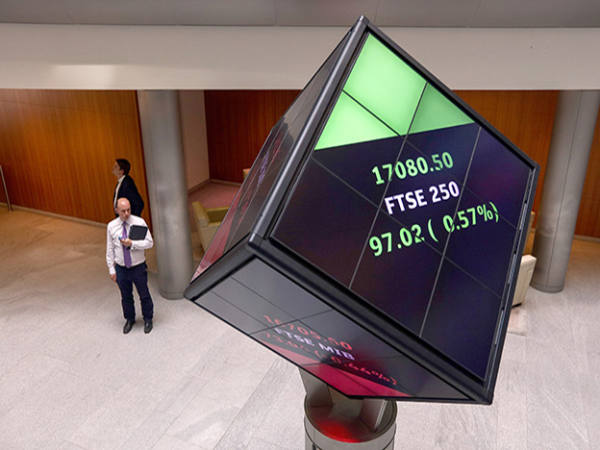The oil and gas sector in 2010 was dominated by the Deepwater Horizon rig disaster in the Gulf of Mexico on 20 April. The tragedy claimed 11 lives and released oil from the ruptured Macondo well 1,500m beneath the surface of the gulf that gushed uncontrollably for three months. By the time the well was finally capped in mid-July, it had spilled an estimated 5m barrels of oil into the sea, marking one of the worst environmental disasters in the industry's history.
The Macondo tragedy sent BP's shares into free fall - that halved the group's market value and pushed the giant to the edge of disaster. Its already somewhat suspect operational reputation was devastated and chief executive Tony Hayward was literally sent to Siberia, after the board granted him a sinecure as a non-executive director of its BP-TNK Russian joint venture. Mr Hayward was replaced by Robert Dudley as BP's chief executive in October. What's more, the cancellation of BP's dividend in the face of political pressure put a considerable dent in investors' cash flows.
BP's woes dragged down the whole sector as concerns grew over the future of offshore exploration and production. This is widely seen as critical to the future of the industry but suddenly looked uncertain as drilling bans rippled from the gulf's oil-stained waters to exploration regions around the world.
Royal Dutch Shell's share shadowed BP's, although they have since recovered to above the highs seen at the time of Macondo. However, fallout from the gulf has had a wider disruptive impact on Shell's operations. Plans to explore the Beaufort Sea in the Arctic, off the Alaskan coast, have been delayed by mounting pressure on the US Department of the Interior to demand increased scientific evaluation before it grants Shell permission to drill.
What's more, the FTSE 350 oil & gas index plunged nearly 30 per cent between the date of the blowout and early July, when hopes finally grew that BP would soon staunch the flow of oil although the index has since recovered much of the ground lost in the aftermath of the disaster. By the end of December, it had almost regained the level seen at the start of the year, but remained 5.3 per cent below its peak in the year, reached just before the Macondo explosion.
Once Macondo was finally capped, the sector spent the rest of the year in rehabilitation. With its third-quarter results, BP demonstrated its resilience by bouncing back to profit, despite having charged $39.9bn (£26bn) to fund spill-related costs and fines. The group's programme to sell assets to bolster finances has also made good progress. Recent sales of assets in Pakistan and Argentina brought total disposals to over $21bn, against a target of $30bn by end-2011.
Analysts have been impressed by the prices that BP's assets have sold for, as well, and think this implies a far higher valuation for the group than suggested by the share price. Certainly, Russia'a Rosneft seems to think so, having bought 5 per cent of the group for $7.8bn. Indeed, portfolio realignment has recently become something of a theme among oil majors, with Shell also getting in on the act. It is looking to divest mature assets and refocus on those offering greater growth potential, such as gas projects in Australia and the Middle East, Athabasca oil sands and the Pearl gas-to-liquids project in Qatar.
Later in the year, the industry got back to the business of producing oil. In late October, BG announced first production from the 100,000 barrels per day (bopd) permanent floating facilities on the Tupi field, offshore Brazil, that it is developing with operator Petrobras and Petrogal. In mid-December, Tullow Oil announced first oil from the Jubilee field in Ghana that will transform its output profile. Production will initially increase to 55,000 bopd and then 120,000 bopd as new wells are completed over the next three to six months.
Accordingly, underlying oil and gas sentiment improved towards the closing weeks of the year. Having traded broadly within the $70-$85 per barrel range for around 18 months, crude oil prices broke through to end the year approaching $100 per barrel. Sentiment is likely to remain positive near-term as winter drives demand, and as developed economies recover and developing economies increase their rates of consumption. The key issue now is how high the oil price can rise before it triggers another recession. With western economies weaker now than they were in 2008, that level is likely to be lower than the record spike of $147 reached that summer.
Upward trending demand, tightening supplies of cheap-to-produce crude and the ability of the Organisation of Petroleum Exporting Countries to manage output should keep the oil price comfortably high enough to encourage continued exploration and acquisitions. SOCO International and Salamander Energy didn't enjoy the best exploration drilling results in 2010 and could do with better luck this year. Cairn Energy will be looking to repeat its Midas touch from India when it resumes drilling in Greenland.
| COMPANY | PRICE (p) | MARKET CAP (£m) | PE RATIO | YIELD (%) | 1 YEAR PRICE CHANGE (%) | LAST IC VIEW |
|---|---|---|---|---|---|---|
| AFREN | 162 | 1,570 | 24.1 | 0.0 | 58.5 | |
| BG GROUP | 1,320 | 44,683 | 17.3 | 1.0 | 7.4 | |
| BP | 504 | 94,679 | 1.7 | -19.6 | ||
| CAIRN ENERGY | 455 | 6,366 | 147.7 | 0.0 | 25.6 | |
| ENQUEST | 151 | 1,204 | 0.0 | |||
| ESSAR ENERGY | 550 | 7,169 | 0.0 | |||
| EXILLON ENERGY | 410 | 566 | 0.0 | 113.0 | No IC View | |
| HERITAGE OIL | 463 | 1,333 | 0.0 | 22.6 | ||
| JKX OIL & GAS | 292 | 501 | 8.1 | 1.8 | -0.6 | |
| PREMIER OIL | 2,000 | 2,328 | 10.8 | 0.0 | 68.1 | |
| ROYAL DUTCH SHELL A(LON) | 2,131 | 75,930 | 13.3 | 5.1 | 14.4 | See RDSB |
| ROYAL DUTCH SHELL B | 2,120 | 57,151 | 14.5 | 5.0 | 17.9 | |
| SALAMANDER ENERGY | 276 | 424 | 0.0 | -7.3 | ||
| SOCO INTERNATIONAL | 349 | 1,189 | 30.3 | 0.0 | -3.5 | |
| TULLOW OIL | 1,381 | 12,267 | 250.5 | 0.4 | 6.7 |








